Develop a Print On Demand Marketplace
Modern print on demand marketplaces connect sellers with their clients worldwide in seconds, providing everyone with enormous possibilities and opportunities. That is why it is promised to keep on growing in the near future, especially when the internet opens the door for online shopping all over the world.
- By Lynn Jones
- 1138 views
- 0 reply

Lynn Jones
One of my favorite quotes is: "Strive not to be a success, but rather to be of Lynn Jone, Digital Marketer, copywriter, and avid fan of Technology!
One of my favorite quotes is: "Strive not to be a success, but rather to be of value" - Albert Einstein.
I graduated from foreign trade university majoring in Economics. However, it took me 5 years to find my passion for Digital Marketing. With over 5-years research and over 3-years practical work experience, I am confident that I can easily what problems your website is facing and suggest the best solution for your business.
I used to be an accountant, a salesperson, a banker even a receptionist. However, I just feel to be myself when I choose to be a Marketer, especially an SEOer. I have spent a lot of time studying and learning about marketing tools like Google Analytics, Google Search Console, Ahref, Alexa, Similar Web, ... In order to understand customer behavior as well as to make a website to be on the top rank on the search tool.
"Content is king". Where advertising is about the sale, content marketing is about establishing a connection. The best content marketing will lure people to your brand and keep them coming back for more.
So let’s explore the wide world of ever-increasing content, and investigate how you ensure your message is well delivered to your target customers.
...
Related Post
Breton Print stands out as a premier full-service printing establishment, renowned for its unwavering commitment to delivering outstanding printing solutions. Whether it's posters, flyers, business cards, booklets, brochures, invitations,...
Overall of Shopify Shopify is a robust e-commerce platform that enables entrepreneurs and businesses to create and manage their online stores with ease. Here's an overview of its key features...
Overall of WIX What is WIX? Wix is a leading website building platform that empowers individuals and businesses of all sizes to create stunning, professional websites with ease. With its user-friendly...
Other Usefull Contents
You can see many success stories from our customers, and you may be one of them in the future
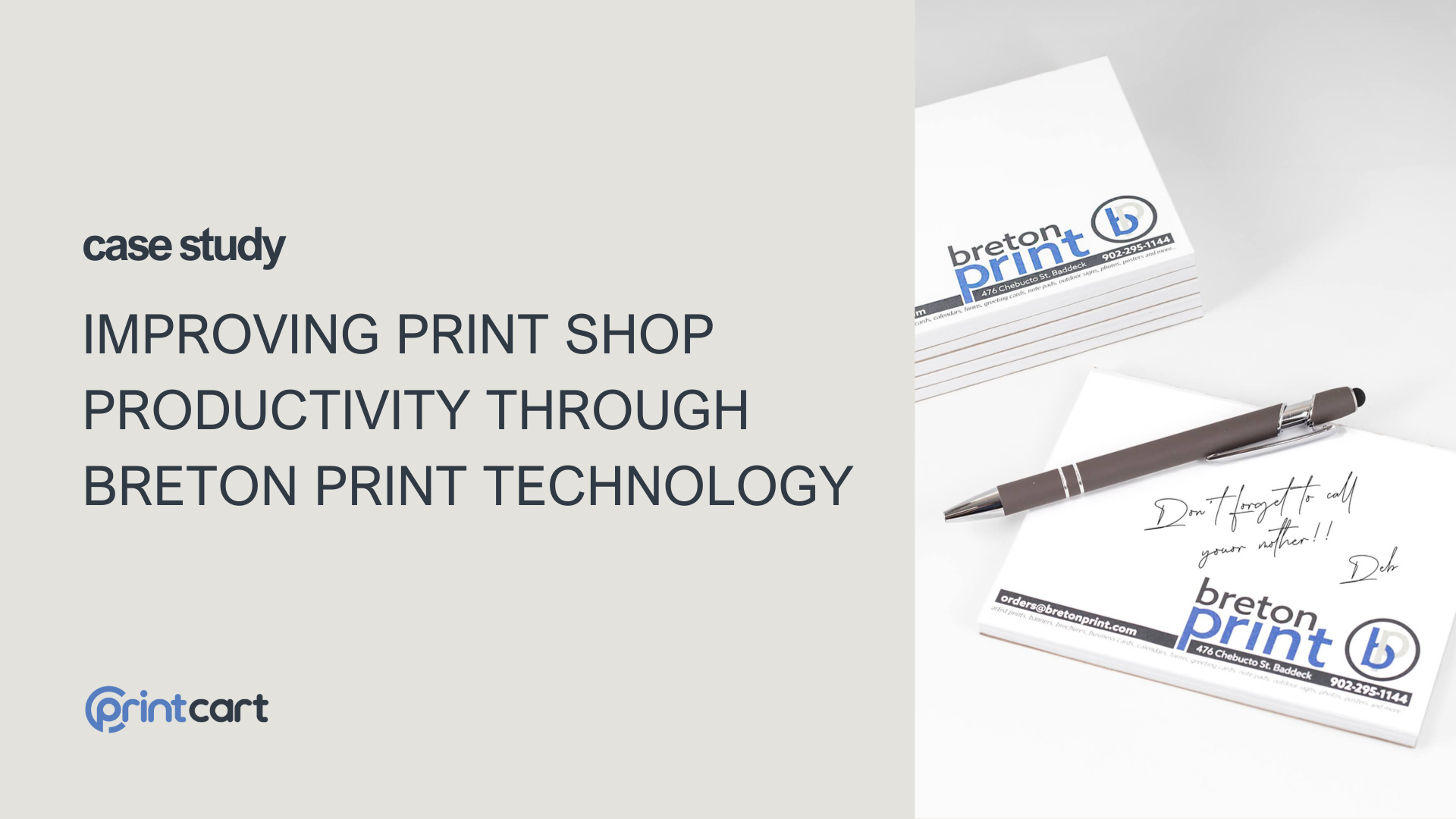
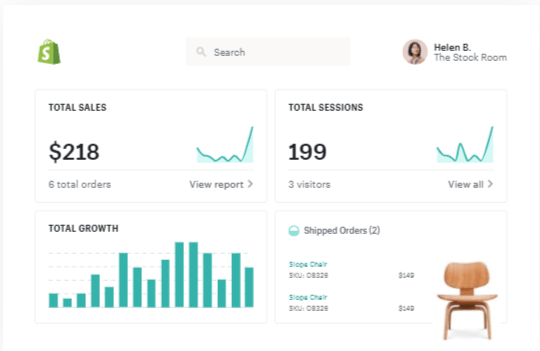
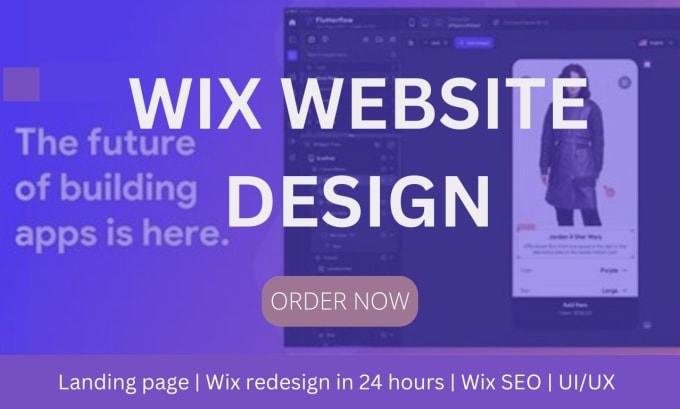


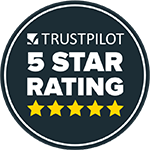
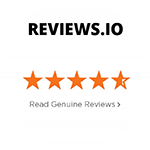

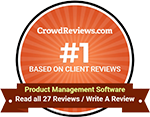




We recently published an article about Teespring Business Model that shared with you how TeeSpring works and how to develop a print on demand website similar to TeeSpring. However, we believe that many readers are still confused and do not know where to start.
In this article, I will explain what marketplace print on demand is and how you can start your own print on demand marketplace by using a web-to-print solution that is integrated with online product personalization software and print on demand marketplace software.
This was inspired by a success story of our client who had sent a request to develop a print on demand marketplace website with multi vendors.
What Is Print On Demand?
Before we look at what print on demand marketplace is, let's have a full understanding of what print on demand is.
Print on demand (POD) is an eCommerce model that allows vendors to sell personalized print products like clothes, mugs, bags according to specific designs. A special thing about this model is that the product will only be printed when an order is created. Therefore, sellers don’t have to store any stocks, being free of problems related to storage or inventory. All sellers need to do is select and subscribe to a platform that will help them through the entire process from print to fulfillment.
In retrospect, Print on demand is another form of the Dropshipping model because Print on demand users don’t have to worry about inventory management, shipping, or delivery. To put it plainly, Dropshipping is when you connect with a supplier to sell their product, and only when customers buy said product from your online store, you need to place an order with the supplier to ship the product directly to your customer’s hands. This means that you do not need to own the product, nor are you responsible for shipping, handling, or storage matters. The Print on demand model is similar with the only difference being that you have to send in your designs for print.
The process will be handled by a third party and just like dropshipping, sellers don’t have to worry about the capital cost since they won’t lose any until customers place an order.
What is Print on demand Marketplace
In general, there are two primary types of print-on-demand websites that you can turn to when you first step into the Print on demand market.
The first type of Print on demand website is Print on demand fulfillment service. These services allow you to sell products on your own website or a third-party marketplace like Etsy. Orders received from your store will be imported for fulfillment service to produce and they will take care of shipment under your brand name as well. All your work is to provide customized products, they will take care of the rest.
The second type of Print on demand website is Print on demand marketplace. These marketplaces are Print on demand platforms, in which you can sell your designated products along with other sellers.
Print on demand marketplace with multi-vendor is an e-Commerce platform where you invite different vendors to sell their products and services. Each of the vendors has a personalized storefront. The market owner will manage everything related to shipping and payment while the vendor will manage the products and packaging. Every vendor will have complete control over his store.
As all sellers will compete in the same market, it is essential for your brand to stand out amongst other competitors.
In this article, I will share with you the development process of your own Print on demand marketplace where you could invite vendors to join your website selling their products and designs.
A Print On Demand Marketplace Website Development
Of course, the most perfect way to have your own Print on demand marketplace is to hire a professional team to build it for you from scratch. However, it will cost you a lot of money.
These are the main stages in print on demand marketplace development and their approximate duration:
Research and analysis (40-100 hours)
Analyze the current market, research the demand, and study competitor services. You can do this on your own or together with an experienced business analyst. Involving a professional will get you detailed project requirements, which will be a solid starting point for your development process.
UX and UI design of a print on demand marketplace (100-300 hours)
Don’t neglect the work of an experienced UX. Their job is to ensure that the users have the best experience when working on your website. A good UX is a competitive advantage, just like a catchy and stylish interface.
Frontend and backend development (300-1000 hours)
The time required to build a print on demand marketplace is much harder to estimate since the time and cost of the development process completely depends on the application’s functionality, the chosen technology stack, the size of the team, and more. However, the approximate numbers mentioned above are real.
The most important applications of a print on demand marketplace are online product personalization software and print on demand marketplace software.
The online product personalization software needs to be capable of customizing all kinds of products that you wish to include on your website. It also should have a huge variety of design options available for your customers. Also, make sure that your software is mobile optimized. Your customers should be able to make customizations from their mobile phones as well.
Selecting the right multi-vendor print on demand marketplace software starts with determining the key features your business model requires from the marketplace script. Though there can be a ton of different business needs and platform functionality to serve them, one thing to remember is the script features should be able to accommodate the various scenarios of an admin-vendor and vendor-customer relationship system. So, in the next parts we are listing non-negotiable features to look for while developing a print on demand marketplace.
Quality assurance and bug fixing (150-350 hours)
To achieve exclusive software quality, development and QA processes should run simultaneously. Some business owners see software testing as a piece of the cake that they can do by themselves. However, a test engineer can implement various techniques to cover most of the possible usage scenarios, ensuring that your customers don’t face an unexpected problem during website usage.
The price of the project is calculated based on software company rates, which vary by country.
In our article on offshore software development, we analyzed different rates and regions. Asia countries such as India or Vietnam generally offer the most attractive prices. That’s why many businesses now choose these two countries as partners for their outsourcing projects.
However, the price starts at US$30,000 for a simple print on demand marketplace and can reach up to US$100,000 for a full-featured application with complex architecture.
So, the marketplace website cost is a significant factor.
In a previous article, we mentioned that instead of searching for a full-service development company, try to search for a web to print solution provider who can develop a Print on demand marketplace website as well as will ensure seamless integration and optimized development of your online product personalization software for Print on demand platform.
That is why we recommend our clients to consider the Printcart Web to print solution which allows store owners to sell their own printing products with online product personalization software called NBDesigner.
With the help of the Printcart Web to print solution, the vendors can create a web to print personalized products for their customers. It will allow the customers to design the products from the storefront.
This solution is useful for those merchants who are selling personalized products such as printed t-shirts, mugs, phone cases, photo gifts, and business cards…
However, every business is unique. So, we take advantage of all the existing functionalities and develop specific features or fix the workflow to be fit with different business models.
With more than 9 years of experience in software and eCommerce website development, we have worked with many clients’ projects. This is the basic workflow of a Pint on demand marketplace that we often offer to our clients.
User Roles
There will be 3 types of user on the website : Admin , User, Vendors.
Admin: Add product, Price, and variations for products, templates, approve vendors, set commission for vendors.
Vendors: Register as vendors on the site and wait for admin approval. After admin approval, vendors can add products and then design from products that were added by admin. After the products are published to sell on the site, the admin will be the person who prints and ships to users. The vendors will get a commission for each successful order.
Sellers: Choose a product from categories, design the product online and make the payment.
Keeping the Signup process easy for both vendors and customers is one important issue.
Nowadays, people are too busy and have so many options in their hands. If it requires multiple steps or too much information to complete then users may get discouraged to enroll on your site. And switch the tab immediately.
Therefore, keep the signup and onboarding process transparent, short, and straightforward. Ask only for relevant information and let users sign-up via social channels like Facebook, Google, Twitter, etc. Also, allow users to retrieve their name/password.
There will be 2 types of products on the website:
Products that are added by admin: Users will have 4 ways to make an order
Choose variations, add to cart, and place an order
Upload design and then place an order
Design online and place an order
Pick a template and then design and place an order
Products that are added by vendors: Users will have 3 ways to make order
Choose variations and add to cart (order a product that has vendor’s design)
Pick a vendor’s design then modify and place an order
Upload design and then place an order
The admin and vendors can upload fonts for the text editor, add images for adding images to the product template, and clipart for adding images to the product template.
The admin and vendors can create multiple templates for a single product with different design areas such as front design, back design, etc.
The customer can use the default design of the product template or edit the template as per the choice.
The customer can use different editors for customizing the design like an image editor, text editor, shape editor. It also lets customers upload their own images or choose an image from a pre-built library.
How vendors add products on Print on demand marketplace
In a Print on demand marketplace, catalog management should be available for administrators and sellers. Both admins and sellers should be able to work with catalogs to ensure products are appropriately represented in the marketplace.
Marketplace admins should be able to set a catalog structure to ensure consistency in their marketplace. Once admins create catalog categories and subcategories, sellers can continue working with them on their own.
On the other hand, sellers need to manage their products and designs. It should be easy for them to create new products and provide product descriptions, images, options, option values, variants, dimensions, properties, and prices.
To add a new product from the vendor dashboard
Step 1: Log in to the vendor dashboard and click on add new product at product tab.
Step 2: Put on product name, selling price and category for the added product and wait for admin approval.
Admins need to give approval for products added by sellers to ensure that all products on their marketplace are of high quality.
In the Vendor store, there will be the product that has been designed with variable colors (vendor set up) and size options (admin set up).
Users can place an order with vendor design or modify vendor design then place an order.
Admin will do the printing, ship the product to customers and pay agreed commission to vendors.
To add design for a product added by admin
Step 1: Click on "Start Designing" to design the products from the product that admin had added.
Step 2: Choose a product that was added by admin and pick the color to design to make sure it is suited for all colors.
Step 3: Design or Upload image to all shirt colors and the process to publish the product
choose to upload a solid design or create an editable design
upload design file
choose additional products to apply the design
When shoppers choose a product to purchase, they could choose among: make a purchase without editing; just choose a design from template library and add to cart; choose a design to modify and then place an order, design your own product with online design feature or upload design then place an order.
Once consumers decide to make a purchase, the process should be seamless and efficient for both parties involved. For consumers, this means quickly entering delivery and payment details (and copying the shipping and payment address if they’re the same). Vendors and especially the admin want a fast way to view what listings have been purchased and where those listings need to be sent, so the admin can manage order fulfillment in a timely fashion.
Vendors are the core contributors to your print on demand marketplace. The more sellers you can get for your site, the more you can grow fast. A good number of sellers mean a lot of product variety on your site. So, you should provide enough facilities for them to sell their products on your site.
You should provide a detailed and individual dashboard for each vendor of your site. From where they can manage their shop including upload and edit products, shipping process, customer communication, and others. Keep all the processes simple and effective. That they can easily understand and handle everything seamlessly.
Also, they should get all the updates and report right on their dashboard. So that they can overview everything at a glance.
Other Important Features For Your Print On Demand Marketplace
To effectively run a print on demand marketplace you need eCommerce softwares that are designed to have full control over the administration vendor relationship as it is the key to successful multishop project completion.
Logistics and payments
Shipping and Payment systems are core features of online Print on demand marketplaces. Without them no transactions between buyers and sellers would be possible. Print on demand marketplace needs to provide several following key functionalities in order to be effective.
Order management: You need this feature to allow sellers to get comprehensive order information. Sellers should be able to export order information, print shipping labels, and cancel or edit orders from their personal dashboards. Sellers should also be able to see an order activity feed with data time tracking of all order activities.
Custom shipping management: With this feature, Print on demand marketplace administrators can add multiple carriers to provide sellers and buyers with various delivery options. Moreover, the more carriers your print on demand marketplace cooperates with, the wider the geographic area you can target.
Shipping calculations: You can greatly enhance the buying experience by implementing automatic shipping calculations. With this feature, buyers will always know how much delivery will cost before their order is shipped.
Product returns and refunds: This feature set gives sellers an opportunity to automate customer returns and refunds. Through the seller’s dashboard, it should be possible to track customers’ return requests, communicate with customers, and approve or deny their requests.
Payment gateway implementation: You should decide which payment gateway to choose for your Print on demand marketplace to ensure automatic and secure payments for your sellers and buyers. With a reliable payment gateway, transferring and receiving payments, providing refunds, and paying marketplace fees becomes effortless.
With our experience in marketplace payment systems integration, payment gateway like Stripe Connect, MangoPay marketplace, and PayPal marketplace will make sure to implement the right payment solution for your particular Print on demand marketplace model.
Credit card payments: Card payments account for almost 50% of all non-cash payments, so implementing a credit card payment feature is a must for ensuring a great user experience.
Single-page checkout: Make sure buyers on your Print on demand platform don’t get confused when it’s time to pay. The checkout page should be user-friendly to help buyers make purchases fast and conveniently.
Guest checkout: By implementing guest checkout, you can make your print on demand marketplace more attractive for buyers. Guest checkout is a great option for people who come to a marketplace for a one-time purchase or for those who get frustrated with creating accounts.
Payment is the most crucial part of the purchasing process. Security is of the utmost importance here. Whenever possible, however, marketplace platforms should make paying as easy as it can be.
On the consumer side, this usually includes offering multiple (secure) payment options.
On the vendor side, the platform should make payment details and policies transparent. Vendors should know how much they’re owed, how the platform arrived at that amount, and when they’ll be paid. They should be reminded of any minimum payment threshold that must be met as well, even if it was already mentioned in the platform’s terms and conditions.
Custom Search & Navigation
Sometimes shoppers want to browse marketplace listings, unsure of what they want or need; they will know it when they see it. Other times shoppers know exactly what they want; they want to find it quickly and execute the sale. The best print on demand marketplace design will be able to accommodate both sets of customers. Achieving this requires the right site architecture and navigation tools based on user behavior.
Your buyers want your sellers and their products to be organized in a logical structure. To ensure that, you need to provide your sellers with the means to organize their wares appropriately: categories, keywords, etc. Your logic must be clear and your tools for uploading and organizing products must be intuitive to them.
Next, you need to provide the search tools that customers expect when they go to an online Print on demand marketplace. That includes search, filter by type, and product tags, etc.
Custom search algorithms can ensure faster, more accurate on-platform search results. You should also consider providing different ways to view product lists so that buyers can customize their navigation experience.
Finally, your search and navigation features need to provide data that can help you improve the user experience. Which categories are clicked on most often in drop-down menus? Which filters are used most often? What are the top search terms?
Admin Interface
While your buyers and sellers define your print on demand marketplace, you are ultimately responsible for it. You will need a set of tools in the shape of an administrative interface that allows you to monitor and make the necessary adjustments to support your customers.
An administrative interface should be able to monitor activity on your print on demand platform and issue alerts when for example your terms of service are being violated.
Your administrative interface can also be used to approve vendors and products, create outreach materials for customers, run competitions and change marketplace settings. It helps you keep track of your key metrics, including which vendors are doing well and which could use some help.
In short, the administrative interface is your mission control. It’s your toolset for making the adjustments on a day-to-day basis to accommodate an ever-evolving market.
We already have a great Responsive admin theme which helps admin to see all the info about lifetime sales, average order value, last orders and search terms. We could modify it to be fit with each business model or develop the same system on any platform instead of Magento 2.
Reviews & Reputation
Allowing buyers to review products and leave comments has several advantages for your print on demand marketplace. First of all, reviews increase the trustworthiness of your marketplace in the eyes of new buyers. Secondly, sellers can analyze buyers’ reviews and understand which products people like and don’t like. Finally, as a marketplace owner, you can use reviews as a quality control indicator.
Product ratings: Another way to get feedback from buyers is to implement five-star ratings. Although such ratings don’t give comprehensive information on buyers’ satisfaction with products, they’re a fast way to see general opinions.
Likes: The ability to identify products buyers like is beneficial for buyers as well as for sellers. With likes, sellers will know what products are in demand while buyers will be able to quickly find popular products.
Wishlist: Letting buyers on your platform save products to wishlists will improve their shopping experience. If a buyer really likes an item but doesn’t have the intention or opportunity to purchase it right away, they can add it to a wishlist and buy it when they’re ready.
Products on sale: Thanks to this feature, sellers can set promotional prices as well as indicate percentage discounts. As a result, sellers will be able to attract more customers to your marketplace.
A review mechanism can also drive traffic to your platform. If you work with your sellers to generate positive reviews and improve their reputation, studies show that you will get more customers who are willing to pay a higher price. That translates to greater profit margins for you and your sellers, which will lead to more sellers, which will lead to more customers.
Social Connect
Shopping has always been a communal experience and social media can replicate that feeling on your print on demand marketplace platform.
People like showing off what they bought, asking for opinions on what they might buy, and just generally talking about cool products they came across. Social media offers an easy way to spread the word about your sellers’ products and your print on demand marketplace in general. It helps to drive traffic to your platform and increases the likelihood of sales.
Customizable Notifications
Users expect a print on demand marketplace platform to at least have a basic notification system, and more advanced systems are appreciated by some users.
A system should at least tell vendors and admin when a listing sells so they can fulfill orders, and then it should inform consumers when their purchases are shipped (for items) or will be available (for services). Including extra features, like notifications for reviews, available listings, and price changes, can help foster more transactions. All of the options offered should be customizable so users get only the information they want.
These notifications have traditionally been sent via email, and that remains the industry standard. More and more platforms are offering other notification methods, such as SMS texts and social messages.
Communication tools
Sellers and buyers should have a straightforward way to communicate inside the platform and discuss questions that might arise. There are different communication options depending on the needs of your print on demand marketplace users.
Live chats: Live chats allow buyers to contact sellers whenever they have a question or an issue. Whether a buyer needs to clarify something about an order or get any other valuable information, they should be able to do it right from their account.
Buyer support: In case buyers can’t get appropriate assistance from sellers or want to learn general information about the marketplace, marketplace administrators should be able to help. Implementing a buyer support center will help you keep in touch with buyers.
Part of the benefit of an internal communication system is that it keeps users within your platform ecosystem. The more time users spend on the site, the greater the likelihood of vendors listing more products and buyers making purchases.
A platform-centric communication system also promotes faster response times. If a buyer sends a query to a seller that is already active on the platform, they are more likely to receive a quick response. This in turn increases the likelihood of a sale.
You can also use an email-based communication system to reach out to your buyers and sellers. This is an excellent tool to help bring users back to your platform when they are not on it. An email outreach tool can be used to notify customers of sales, inform them of orders being shipped, and even provide them with a newsletter of upcoming promotions and events.
Loyalty programs
Marketplace loyalty programs are taking loyalty rewards to a new level because they offer multiple benefits. It allows a brand to grow across categories faster and expand its online presence swiftly by leveraging off the existing profiles of the brands they sell.
When loyalty programs are integrated, the marketplace owner ultimately benefits by becoming the facilitator of a community that cares for loyal customers, and sellers, encouraging their return business, as well as providing access to richer customer data.
Sellers are also able to offer rewards and incentives without the headache of setting up and running their own program. Or they can use it as an add-on to their existing in-house loyalty programs.
The types of loyalty programs you could consider to integrate into your print on demand marketplace.
Rebate/Cash Back Program
Rebate programs allow customers to earn money back from prior purchases and redeem it after a certain amount of time or a set amount. The rebate is often a percentage of the total purchases within a period of time. This is usually done in some form of the gift certificate in order to bring customers back into the store, but can also be in the form of cash.
Pros of rebate/cash back loyalty programs
Easy for customers to understand.
Easy for employees to explain to customers.
Drives customers back into the store and encourages repeat purchases.
Customers often feel like they are accruing value.
Cons of rebate/cash back loyalty programs
There is no instant gratification.
It can be expensive.
It may not appeal to infrequent shoppers.
Discount Program
A discount program offers a certain percentage or dollar amount off of a purchase. This can apply to a specific product or an entire purchase. This program usually applies instant benefits to customers during check out.
Pros of discount program
There is instant gratification.
It is easy for consumers.
It is easy for businesses.
Cons Pros of discount program
It implies that regular prices are too high and lowers the value of the product.
It rewards infrequent shoppers.
Gives away margin.
3. Points Program
For this program, points are used as currency in order for customers to keep track of their rewards. Customers usually earn points based on the amount they spend.
Pros of points program
It is easy for customers to understand.
It avoids price discounting.
Cons of points program
There is no instant gratification.
Points may take a long time to accrue, depending on the program.
Customers may need to be reminded of their status in the program.
One of the most common pitfalls of points-based programs is how long it takes to rack up enough points to redeem for anything meaningful. Buyers might stop using or otherwise drop out of a loyalty program if it takes too long to accrue enough points to make the membership worthwhile.
Whatever type of loyalty program you institute, the key is simplicity, all the way up the chain from how your customers hear about your loyalty program, to how they sign up, to how they use it, to how they accumulate rewards to how they use those rewards.
Simple and effective loyalty programs help drive results, get customers into the store, and encourage repeat business.
It's important to combine technology with loyalty, and we have the tools available to help you stand out against your competition. Printcart is committed to helping you make your loyalty program easy and accessible and, above all, useful for your customers.
Language & Currency
The internet was created to ignore boundaries and divisions, but if you compel people to speak your language and pay in the currency you are comfortable with, you are going to lose customers. Competing and working on a global scale means being able to communicate in multiple languages, selling in multiple currencies. Obviously, this poses challenges.
When it comes to language, you don’t want to lose anything in translation. It is unlikely many of your sellers will write product and service descriptions in multiple languages. They are probably going to write just one version, and it will be up to your platform to translate it into other languages.
Exchange rates that vary from one minute to the next can make the currency a complicated matter. Buyers want prices indicated in their preferred denomination, while sellers want to be paid in their home currency.
Your print on demand marketplace should track different exchange rates and make updates in real-time to ensure accurate, fair prices for your buyers and sellers despite them using different mediums of exchange.
SEO
Search engine optimization can be a great source of traffic for your print on demand marketplace. Making sure that your marketplace, its sellers, products, and services rank high in search results will have more potential customers clicking through to your platform.
SEO has technical, off-page, and on-page components. While off-page SEO mostly concerns content marketing efforts like backlink building, you as the marketplace owner should take responsibility for the other two.
In SEO, keyword planning plays a crucial role in the success or failure of the campaign, if the chosen keywords are too difficult, it will cost a lot of time and money to implement SEO, or in case the chosen keywords are searched by no one, it is impossible to create any business efficiency. We would advise you to choose the right keywords.
Based on the keyword analysis result, we will come up with a very detailed report on the market and your current competitors.
Our search engine optimization (SEO) services are designed to deliver high-quality, targeted traffic to your website. All of our work is done manually. There are no artificial bots, spam, or pesticides in our organic strategies, and every campaign we design is entirely bespoke to the printing industry and your unique business.
Security features
You definitely should take care of your print on demand marketplace security to ensure peace of mind for sellers, buyers, and yourself. Let’s have a look at the features that will improve security in your print on demand marketplace.
Database backups: By doing regular backups, you can be sure information on your print on demand marketplace doesn’t get lost even if external factors interrupt your platform’s operation. With backups, recent data can always be restored.
Secure User Authorization: A print on demand marketplace platform must, of course, have a way of authenticating its users. This may seem like an overly basic step, but it shouldn’t be overlooked. Hacks into user accounts have rocked even the most successful marketplaces. While some big marketplaces have been able to survive massive authorization problems, a single scandal could devastate a less-established, smaller marketplace.
At a bare minimum, a marketplace must let both vendors and consumers log into their accounts securely and quickly. Users should also be able to adjust their account settings, and social logins (e.g. through Facebook or Twitter) are appreciated by some people.
Mobile Support
On top of all these features, a print on demand marketplace platform should also offer mobile functionality. Mobile internet usage eclipsed desktop usage a few years ago, making the platform's mobile usability even more important than its desktop usability. A platform that’s able to incorporate all of these features into both a desktop and mobile design will let users access listings and information when they need to, and the platform will be well poised for success.
These are the absolute minimum features your marketplace app needs to start attracting customers. Later on, you’ll add more sophisticated features to improve the user experience and increase your revenue. Moreover, customer interaction will give you ideas for new functionality as well!
Printcart Web to Print Solution - The Perfect Print On Demand Marketplace Platform For Business Owners
Print-on-demand is promised to keep on growing in the near future, especially when the internet opens the door for online shopping all over the world. Modern print on demand marketplaces connect sellers with their clients worldwide in seconds, providing everyone with enormous possibilities and opportunities.
Printcart provides fully functional WordPress and Magento print on demand marketplace solutions that can be customized as per your requirement. You can now start your own Print-on-Demand marketplace like Redbubble, Teespring, Society 6, Spreadshirt, and allow anyone to list and sell their custom design products to customers. You can let your customers design and personalize products in your store as they buy them.
The customers can design a whole new product by using predefined templates and can make changes to it by using different fonts, texts, colors, images, etc. Even the sellers can create pre-defined text styles and fonts and attractive prebuilt image libraries.
Build Your Dream Print-on-Demand Marketplace Today
The print on demand marketplace is a rapidly growing business model, offering immense opportunities for entrepreneurs to tap into the booming eCommerce sector. By leveraging innovative web-to-print solutions, personalized product customization software, and robust multi-vendor features, you can create a platform that meets both sellers' and customers' demands.
From research and design to development and deployment, each step in building a print-on-demand marketplace is crucial to delivering a seamless user experience. With the right tools, like the Printcart Web-to-Print Solution, you can streamline the complexities of running a marketplace, from enabling product personalization to managing vendor relationships and logistics.
At Printcart, we specialize in providing tailored solutions that ensure your marketplace is equipped with the features and functionalities needed for long-term success. Whether you're looking to create a marketplace like TeeSpring, Redbubble, or something uniquely your own, we’re here to guide you every step of the way.
Are you ready to take the first step? Reach out to us today to discuss your ideas and learn how Printcart can help bring your print-on-demand marketplace vision to life. Contact us at support@printcart.com and let’s start building your success story!
Lynn Jones
One of my favorite quotes is: "Strive not to be a success, but rather to be of value" - Albert Einstein.
I graduated from foreign trade university majoring in Economics. However, it took me 5 years to find my passion for Digital Marketing. With over 5-years research and over 3-years practical work experience, I am confident that I can easily what problems your website is facing and suggest the best solution for your business.
I used to be an accountant, a salesperson, a banker even a receptionist. However, I just feel to be myself when I choose to be a Marketer, especially an SEOer. I have spent a lot of time studying and learning about marketing tools like Google Analytics, Google Search Console, Ahref, Alexa, Similar Web, ... In order to understand customer behavior as well as to make a website to be on the top rank on the search tool.
"Content is king". Where advertising is about the sale, content marketing is about establishing a connection. The best content marketing will lure people to your brand and keep them coming back for more.
So let’s explore the wide world of ever-increasing content, and investigate how you ensure your message is well delivered to your target customers.